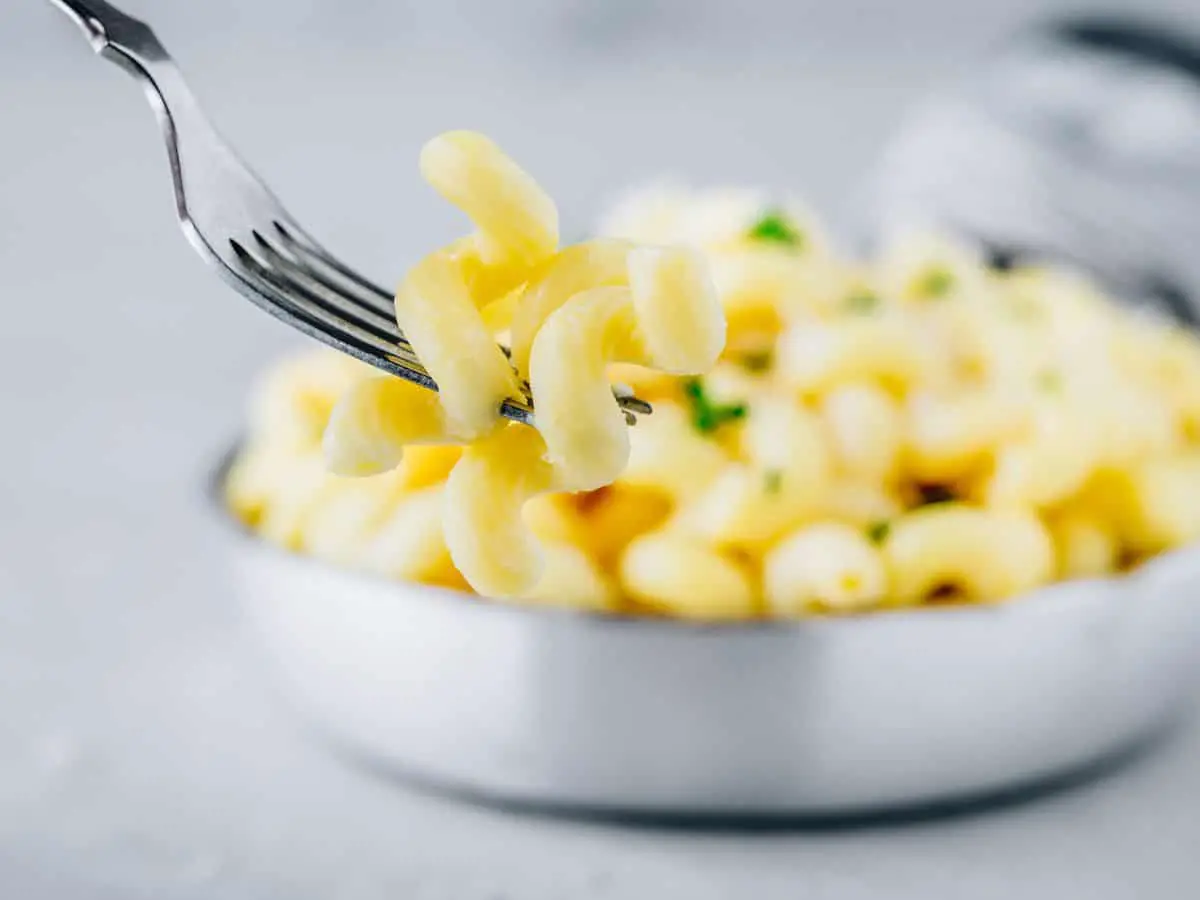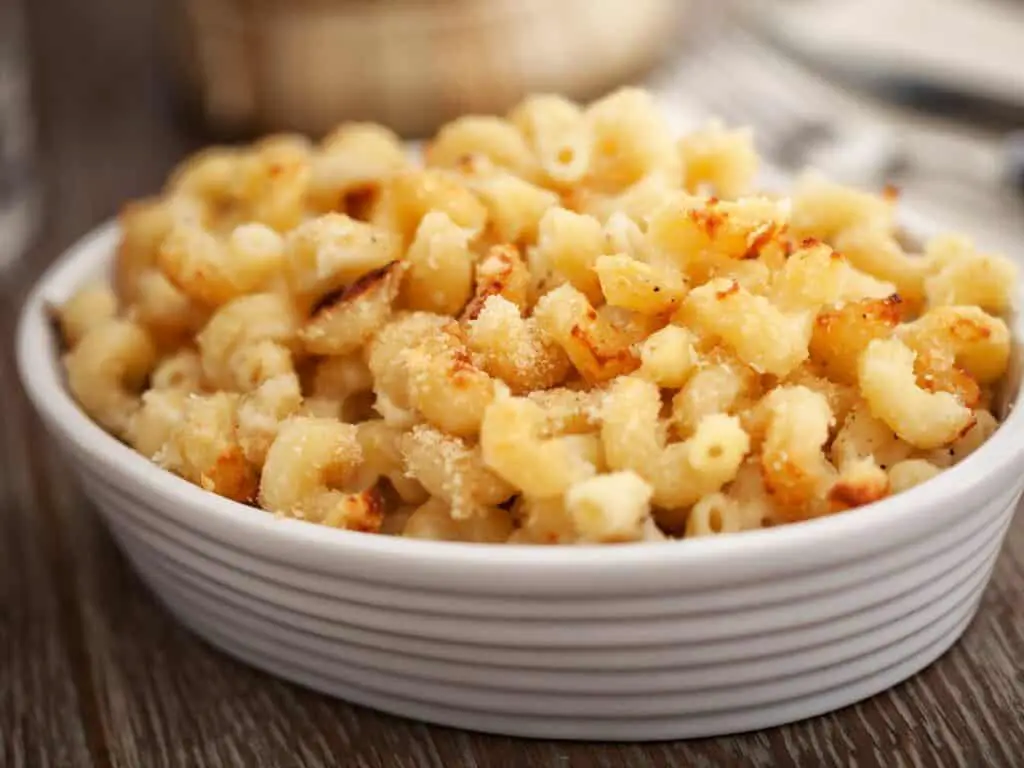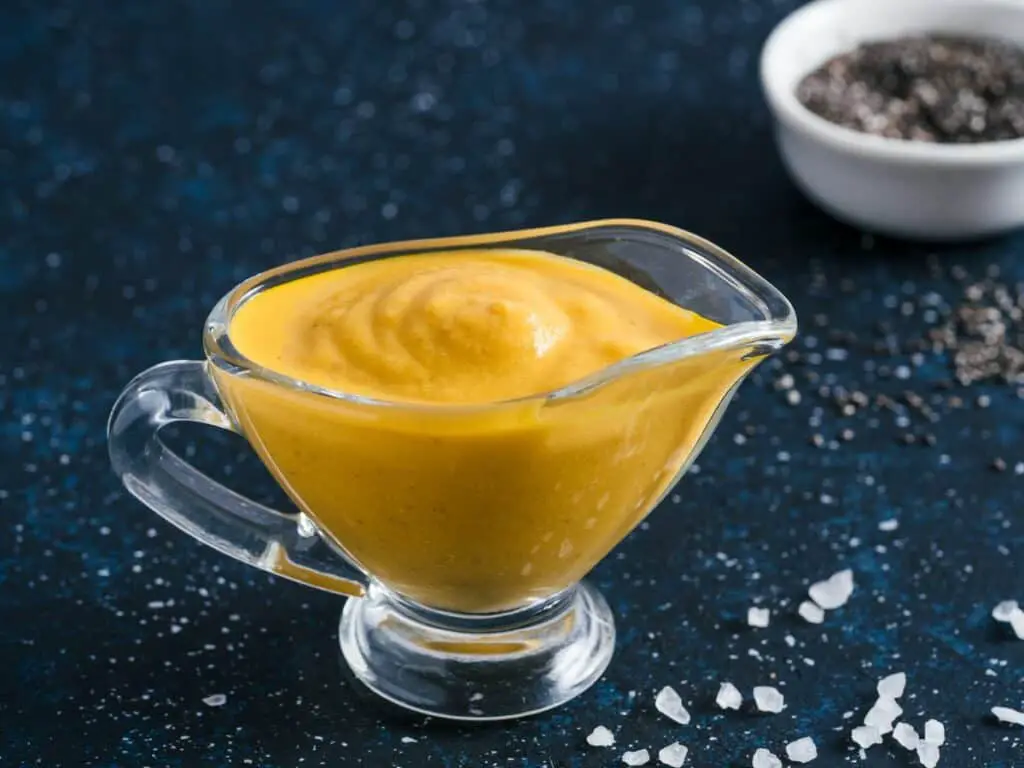Why is My Macaroni and Cheese Grainy? [And How to Fix It?]

Ending up with a grainy macaroni and cheese is not very uncommon, infact it’s a common occurrence with most cheese sauces. I have ended up in this situation pretty often.
Grainy or a gritty texture in macaroni and cheese or your cheese sauce isn’t very appetizing. Gaining a better understanding of how cheese and dairy react after being exposed to heat, helps to remedy your cheese sauce easily and not end up with a gritty, grainy sauce.
Macaroni cheese turns grainy when the cheese has been exposed to high heat rapidly or for a longer duration. The evaporation of water from the cheese destabilizes the protein molecules which form an emulsion between fat and water which results in the curdling the protein and oozing out the fat.
In this article let us look into some of the reasons which cause macaroni and cheese to become grainy and how to fix it.
What causes grainy macaroni and cheese?
The main culprit that makes your delicious macaroni cheese or cheese sauce grainy is the cheese. The kind of cheese used has a great impact on whether the cheese will separate or not!
Cheeses with higher moisture content such as mozzarella and gruyere will not separate as easily as compared to parmesan which is a dry cheese with very low moisture levels.
This happens primarily because cheese is an emulsion made up of protein, fat and water. The dairy fat and water is held together with the network of proteins creating the emulsion. At cooler or room temperatures this emulsion remains in a solid state.
However, on being exposed to higher temperatures the chains of proteins destabilize and sag which results in the cheese melting. At further temperatures the ratio of water content and the dairy fat is not maintained as the water evaporates allowing the fat to slip away and the proteins to clump together again.

This is primarily the reason why cheese separates at higher temperatures or being exposed to higher temperatures too quickly. This also explains as to why the cheese with high moisture content such as mozzarella, brie, gruyere melt but do not separate. Cheese with lower moisture content such as parmesan will loose the moisture present and separate easily.
Suggested Reading: Why Is My Mac And Cheese Dry? [And Here’s How To Fix It!]
How Do You Prevent Macaroni and cheese from becoming grainy?
Macaroni and cheese can become grainy when you are preparing the cheese sauce for the dish, or when you are reheating the leftover macaroni and cheese.
There are a few steps that can be taken to ensure you do not end up with a grainy macaroni cheese or a split cheese sauce. These steps are to be followed once you have made the roux or the bechamel sauce.
Here are a few things you can do:
- Always ensure using the lowest temperature on the stovetop. Therefore, lower the stovetop temperature once you made the bechamel sauce. If using an oven the setting has to be on the lower side.
- While making the cheese sauce keep stirring constantly, this will enable the heat to spread evenly.
- Use grated cheese. Cubed or sliced cheese will also do, but never use blocks of cheese as they do not melt evenly and will only lead to keeping the sauce on the heat for longer durations which will eventually split.
- Always add the cheese toward the end when the sauce has thickened.
- Once the cheese is added remove the saucepan from the heat after a minute or two. Or as soon as the cheese has melted.
- Use cheese with excellent melting ability.
- While reheating macaroni and cheese
The above steps are foolproof which when followed ensure that you have a beautiful and smooth sauce with sumptuously creamy texture.
Suggested Reading: Do You Need Butter For Macaroni And Cheese? [Full Guide!]
How do you fix grainy macaroni and cheese?
Once you notice that your macaroni and cheese sauce is turning grainy or has already turned grainy. Here are a few things you can do to fix the same.
- As soon as you see your cheese curdling remove it from the heat immediately. This will stop the cheese from cooking further and prevent the sauce from getting separated.
- Add some cream, milk, or half and half. You might have to adjust the seasoning as adding cream or milk will make the macaroni cheese bland.
- Add some leftover roux or bechamel sauce or whip up and add a small batch of the same.
- Alternatively, add some flour and simmer for a few minutes until the raw smell goes away while whisking vigorously. This will absorb the fat given out from the cheese and make it creamy again.
- If you are not able to add any of the above then just strain the cheese sauce through the strainer using a silicone spatula.
Related Reading: How to Make Roux for Macaroni and Cheese? [Step-by-Step Guide!]
Mistakes to avoid to make a perfect cheese sauce

Achieving a perfect cheese sauce is simple and easy. However, you need to understand the technique and some mistakes that can be made while making it.
- Use roughly the same amount of milk and cheese to get a good creamy mix of the cheese sauce. The ratio of 1:1 of dairy and cheese will give a perfect consistency to the sauce.
- While making the bechamel sauce use warm milk instead cold milk to add to the roux.
- Use a mixture of cheeses, instead of one cheese. This will ensure your cheese doesn’t separate easily as well as add a layer of depth to the sauce.
- Getting the right mix of cheese to be used in macaroni and cheese. Mixing cheeses with higher moisture content with lower ones can eliminate the problem of your cheese sauce turning grainy.
Hope the above article has given you a better understanding about making a perfect cheese sauce. The things that can go wrong and some precautions you can take to prevent you cheese sauce from becoming grainy.
More Related Articles
Here are some more articles related to Macaroni and Cheese that you may find interesting!
- Should You Put Egg in Macacroni and Cheese? [Here’s a Complete Guide!]
- Why is Your Macaroni and Cheese Oily? [And How to Fix It!]
- Is Pasta and Macaroni the Same? [Here’s the Difference!]
- Can You Use Pizza Sauce for Pasta? [Here’s a Better Way!]
- Is Pizza and Pasta Flour the Same? [Here’s the Differences!]
![How to Cut a Pizza into 8 Slices! [And Why?]](https://myhousehacks.com/wp-content/uploads/2023/02/ezgif.com-gif-maker-64-768x576.jpg)
![What Cream to Use for Pasta? [With Table and Examples!]](https://myhousehacks.com/wp-content/uploads/2022/07/ravioli-602087_1920-768x598.jpg)
![Pan Frying vs Deep Frying Chicken [The Differences Debate!]](https://myhousehacks.com/wp-content/uploads/2023/02/ezgif.com-gif-maker-2023-02-20T190052.626-768x576.jpg)
![How to Make Kraft Mac and Cheese? [Healthy, Tasty, Creamy!]](https://myhousehacks.com/wp-content/uploads/2023/01/ezgif.com-gif-maker-31-768x576.jpg)
![How to Cut a Pizza into 6 Slices! [Easy Tips and Tricks!]](https://myhousehacks.com/wp-content/uploads/2023/02/ezgif.com-gif-maker-79-768x576.jpg)
![Fried Chicken vs Grilled Chicken [ 8 Differences with Calories!]](https://myhousehacks.com/wp-content/uploads/2023/02/ezgif.com-gif-maker-2023-02-17T181635.944-768x576.jpg)